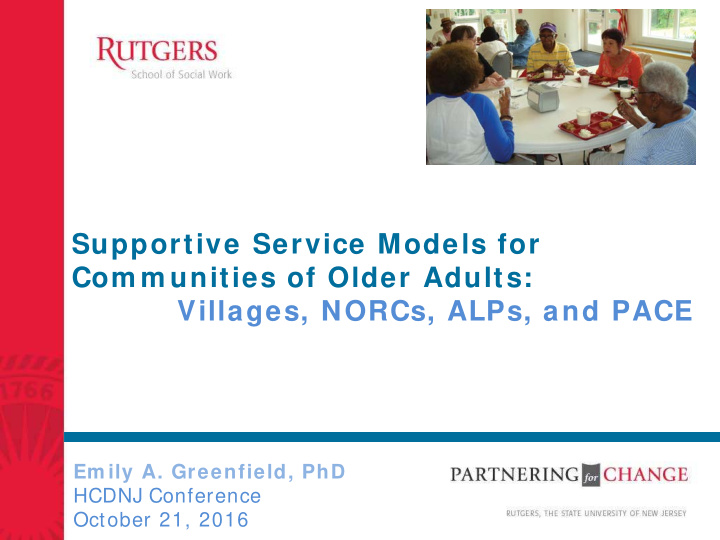



Supportive Service Models for Com m unities of Older Adults: Villages, NORCs, ALPs, and PACE Em ily A. Greenfield, PhD HCDNJ Conference October 21, 2016
Energizing Our W orlds!
Housing as a Continuum • In 2011, 5.5 million (15% ) of Medicare beneficiaries lived in non-traditional housing – 2.5 million in retirement or senior housing (communities with age restrictions, but not residential care) – 1 million in independent living (services, but without personal care services) – 1 million in assisted living (with personal care services) – 1.1 million in nursing homes (Freedman & Spillman, 2014)
Housing Plus Supportive Services • Amenities of a home + (some degree of) supportive services
Focus of Aging Services • Aging in place and in the community • Traditional focus on the Aging Network
County-Based System
Supports in HUD Housing • Supportive Service Coordinators as social service staff • Hired by, or contracted through, owner or property management group • Link older adults, especially those at risk, and people with disabilities to supports to live independently
Federal Visions for the Future
Models for Supportive Service Delivery
Big I deas • Highly relevant for communities with large concentrations of older adults • Models cater somewhat differently to communities with particular needs and resources • Strong enthusiasm, yet require leadership and partnerships in the face of fiscal challenges
Models for Supportive Service Delivery REFER TO HANDOUT
Villages
NORC Supportive Service Program s
Assisted Living Program s ( ALPs)
Program of All-I nclusive Care for the Elderly ( PACE)
The End? Emily Greenfield Associate Professor Rutgers School of Social Work emilyagreenfield.com egreenf@ssw.rutgers.edu
Recommend
More recommend